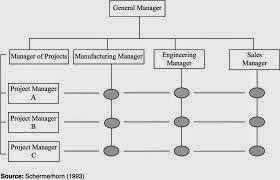DIFFERENCES BETWEEN MANAGER AND LEADER
Both a
manager and a leader may know the business well. But the leader must know it
better and in a different way. S/he must grasp the essential facts and the
underlying forces that determine the past and present trends in the business,
so that s/he can generate a vision and a strategy to bring about its future.
One telling sign of a good leader is an honest attitude towards the facts,
towards objective truth. A subjective leader obscures the facts for the sake of
narrow self-interest, partisan interest or prejudice. Effective leaders
continually ask questions, probing all levels of the organization for
information, testing their own perceptions, and rechecking the facts. They talk
to their constituents. They want to know what is working and what is not. They
keep an open mind for serendipity to bring them the knowledge they need to know
what is true. An important source of information for this sort of leader is
knowledge of the failures and mistakes that are being made in their
organization. To survive in the twenty-first century, we are going to need a
new generation of leaders — leaders, not managers. The distinction is an
important one. Leaders conquer the context — the turbulent, ambiguous
surroundings that sometimes seem to conspire against us and will surely
suffocate us if we let them — while managers surrender to it.
Leaders
investigate reality, taking in the pertinent factors and analyzing them
carefully. On this basis they produce visions, concepts, plans, and programs.
Managers adopt the truth from others and implement it without probing for the
facts that reveal reality.There is profound difference — a chasm — between
leaders and managers. A good
manager does things right. A leader does the right things. Doing the right things implies a
goal, a direction, an objective, a vision, a dream, a path, a reach.Lots of
people spend their lives climbing a ladder — and then they get to the top of
the wrong wall. Most losing organizations are over-managed and under-led. Their
managers accomplish the wrong things beautifully and efficiently. They climb
the wrong wall.
Managing
is about efficiency. Leading is about effectiveness. Managing is about how.
Leading is about what and why. Management is about systems, controls,
procedures, policies, and structure. Leadership is about trust — about
people.Leadership is about innovating and initiating. Management is about
copying, about managing the status quo. Leadership is creative, adaptive, and
agile. Leadership looks at the horizon, not just the bottom line.Leaders base
their vision, their appeal to others, and their integrity on reality, on the
facts, on a careful estimate of the forces at play, and on the trends and
contradictions. They develop the means for changing the original balance of
forces so that their vision can be realized.
A
leader is someone who has the capacity to create a compelling vision that takes
people to a new place, and to translate that vision into action. Leaders draw
other people to them by enrolling them in their vision. What leaders do is
inspire people, empower them.
They
pull rather than push. This "pull" style of leadership attracts and
energizes people to enroll in a vision of the future. It motivates people by
helping them identify with the task and the goal rather than by rewarding or
punishing them.
There
is a profound difference between management and leadership, and both are
important "To manage" means "to bring about, to accomplish, to
have charge of or responsibility for, to conduct." "Leading" is
"influencing, guiding in direction, course, action, opinion." The
distinction is crucial.
Management
is...
Leadership is....
Coping
with
complexity
Coping with and promoting change
Planning
and Budgeting
Setting a Direction
Organizing
and
Staffing
Aligning People
Controlling
and Problem
Solving
Motivating and Inspiring People
Effective
Action
Meaningful Action
Both
are necessary and important.
Managers
are people who do things right and leaders are people who do the right thing.
The difference may be summarized as activities of vision and judgment — effectiveness —versus activities of mastering routines
— efficiency. The chart below indicates key
words that further make the distinction between the two functions:
· The manager administers; the leader
innovates.
· The manager is a copy; the leader is
an original.
· The manager maintains; the leader
develops.
· The manager accepts reality; the
leader investigates it.
· The manager focuses on systems and
structure; the leader focuses on people.
· The manager relies on control; the
leader inspires trust.
· The manager has a short-range view;
the leader has a long-range perspective.
· The manager asks how and when; the
leader asks what and why.
· The manager has his or her eye always
on the bottom line; the leader has his or her eye on the horizon.
· The manager imitates; the leader
originates.
· The manager accepts the status quo;
the leader challenges it.
· The manager is the classic good
soldier; the leader is his or her own person.
· The manager does things right; the
leader does the right thing.
The
most dramatic differences between leaders and managers are found at the
extremes: poor leaders are despots, while poor managers are bureaucrats in the
worst sense of the word. Whilst leadership is a human process and management is
a process of resource allocation, both have their place and managers must also
perform as leaders.


Comments